TV Eye
Published in Early Modern History (1500–1700), Issue 4 (Jul/Aug 2007), Reviews, Volume 15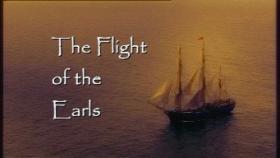
Title shot from the documentary.
The Flight of the Earls
BBC 1 & 2, Jan./Feb. 2007
(scheduled to be rebroadcast in September 2007, dates not yet available)
BBC Northern Ireland
Presented and produced by Antaíne Ó Donnaile
by John Gibney
A few years ago RTÉ commemorated the quatercentenary of the Battle of Kinsale with, shall we say, a somewhat thrifty documentary that seemed to use the same three actors running around in slow motion to depict the thousands of English, Irish and Spanish soldiers involved in the battle. Saving Private Ryan it was not. On the other hand, for the corresponding anniversary of the Flight of the Earls, BBC Northern Ireland have come up with a lavish three-part documentary filmed in as many relevant Irish, English and European locations as seems possible, resplendent with vivid contemporary images, sweeping shots from helicopters, mournful uilleann pipes, sailing-ships, and grittily filmed reconstructions of the battles and skirmishes of the Nine Years’ War that are easily a cut above the average. When it comes to the ambush at the Ford of the Biscuits, there is no shortage of biscuits and bodies to lie
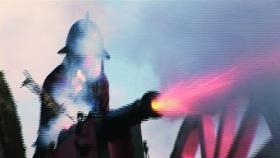
Grittily filmed reconstructions of the battles and skirmishes of the Nine Years’ War are a cut above the average.
This series looks fantastic, which is no bad thing as for many people it may well be their main encounter with the 400th anniversary of the Flight of the Earls, and the BBC are to be commended for making it. There have been, and will be, conferences, symposia, scholarly articles and commemorations (not to mention the current issue of History Ireland), but this documentary, originally broadcast in January and February in both English and Irish versions, and scheduled to be rebroadcast in September 2007, should be seen alongside such activities. While they are providing more specific and detailed versions of the event and what surrounded it, there is always a need in such circumstances for an account that outlines the bare bones of the subject at hand, and BBC Northern Ireland have provided it.
The first two episodes cover the Nine Years’ War and its consequences, with an inevitable emphasis on the enigmatic figure of Hugh O’Neill, earl of Tyrone. The symbolic value of the Flight of the Earls, coming between the war and the plantation of Ulster, easily overshadows the actual event itself; in this case, context is undoubtedly everything. These episodes cover the provocative Elizabethan encroachments upon the Ulster chieftains in the 1580s and 1590s, through the battles of the Yellow Ford and Kinsale, the scorched earth campaign that followed the latter, and the eventual Treaty of Mellifont, in order to set the stage for the actual departure of O’Neill and Rory O’Donnell, earl of Tyrconnell, in September 1607.
The third (and best) episode, which could easily stand alone, deals with the flight itself and the subsequent wanderings of O’Neill and his cohorts through the courts and cities of Europe. Events in Ireland had international implications. Having landed in northern France, O’Neill and O’Donnell went to Louvain in Flanders, where their presence proved sensitive against the backdrop of negotiations between the Dutch (aligned with England) and Albert, archduke of Austria, who governed the Spanish Netherlands on
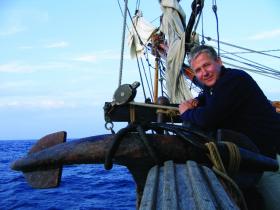
Presenter and producer Antaíne Ó Donnaile on board the Earl of Pembroke.
behalf of Philip III of Spain. It was from here that their wanderings commenced, travelling through France, and even risking detours through Protestant regions of Germany on their winding road to Rome, where the exiled earls would find their final resting-places. This is often the most neglected part of the story of the Flight of the Earls, and that gap is ably filled here. Philip III viewed O’Neill as a potentially useful asset should open hostilities against England start again, though he did little to reciprocate O’Neill’s fervent hope that the Spanish would provide him with an invasion fleet. The English, on the other hand, remained fearful of O’Neill landing and thus provoking another war. They would have been hard pressed to prosecute such a war, even though the inclination to do so was there: there is no shortage of blood-curdling English testimonies utilised throughout the series to reveal the extent of their contempt for, and brutality towards, the Irish. They wanted O’Neill dead, but were contented as he travelled farther and farther from Ireland, towards the final—and fruitless—Roman exile that lies at the core of Brian Friel’s Making History.
Antaíne Ó Donnaile does a good job of telling his story—and it is a good story to tell—even if this reviewer began to
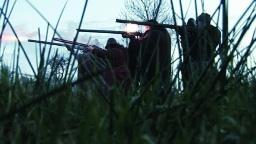
turn green with envy at the locations he ends up in: London, El Escorial, the Irish College at Louvain, Nancy, Lucerne (and Lake Lucerne), and thence to rugged Alpine passes, Milan, Florence and finally Rome. The series starts a tad abruptly, and the first episode is a bit leisurely in places, but when it gets into its stride the quality of the production and the inherent drama of the events make it compelling viewing. One weakness, however, is that the significance of the events, while often referred to, doesn’t really get fleshed out in detail: a few ‘talking heads’ scattered throughout the series to unpick the meanings would have been useful. The Flight of the Earls came after a war that devastated Ireland and nearly bankrupted England itself. The removal of the earls and the confiscation of their lands opened the door to the Ulster Plantation. But when the rebellion of Sir Cahir O’Doherty in 1608, and its ruthless suppression, is depicted in the third episode, the clear implication is that matters might have been different had O’Neill and co. stayed put. What if . . . ?
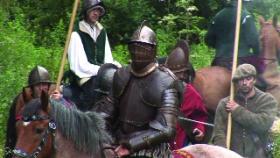
Middle: English commander Henry Bagenal before the Battle of the Yellow Ford in August 1598.
But this is a relatively minor quibble: the other way of looking at this is that it whets the appetite to know more. Viewers can figure these things out for themselves, as in this anniversary year there is no shortage of coverage of, or events about, the Flight of the Earls.
John Gibney was the National Endowment for the Humanities faculty fellow for 2006–7 at the Keough-Naughton Institute for Irish Studies, University of Notre Dame, and is now an Irish Research Council for the Humanities and Social Sciences fellow at NUI, Galway.
















